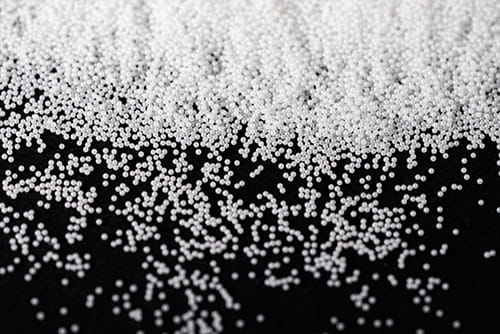The size of zirconia beads determines the number of contact points with the material. Smaller beads have more contact points in the same volume, theoretically leading to higher grinding efficiency. On the other hand, when grinding materials with larger initial particles, such as a slurry with 100 microns particles, beads with a diameter of 1mm may not be effective. This is because the impact force of small beads may not be sufficient for thorough grinding and dispersion. In such cases, larger beads should be used.

How to determine the particle size of zirconia beads:
A. Grinding equipment requirements:
Sieve separation: Bead diameter = sieve gap * 1.5;
Ring separation: Bead diameter = ring gap * 3;
B. Process requirements:
Initial particle size of the material: Bead diameter = material's initial diameter * 30-50;
Final particle size of the material = bead diameter.
Considerations when using zirconia beads:
Choose zirconia beads or other grinding media based on the material's viscosity.
Select beads of appropriate size based on the raw material particle size and the required fineness of the product.
Check if the separator or sieve mesh of the grinding machine is set appropriately, with a gap of one-third of the diameter of small beads. For example, when using beads of 1.2-1.4 mm, the gap should be 0.4 mm.
Avoid starting the grinding machine in a dry state to prevent unnecessary wear of beads and components.
Do not mix different types of beads.
Avoid mixing beads of different sizes.
Principles of replenishing grinding media:
If the grinding efficiency of the machine decreases, it may be a sign to add beads. Users can determine the actual loss rate of beads based on their process conditions and perform periodic screening and replenishment. Use a sieve with a mesh size two-thirds of the bead diameter (e.g., for 1.2-1.4 mm beads, the sieve mesh should be 0.8 mm), then add the required additional beads.
How to replenish grinding media:
Due to natural wear, bead diameters may decrease over time. To maintain a consistent filling level and prevent clogging or entry into the separation device, regularly screen and replenish a certain amount of grinding media based on the media's lifespan and the user's process conditions. It is recommended to screen and add new beads after 100-200 working hours.

Submit your demand,
we will contact you ASAP.

Sanxin New Materials Co., Ltd. focus on producing and selling ceramic beads and parts such as grinding media, blasting beads, bearing ball, structure part, ceramic wear-resistant liners, Nanoparticles Nano Powder

